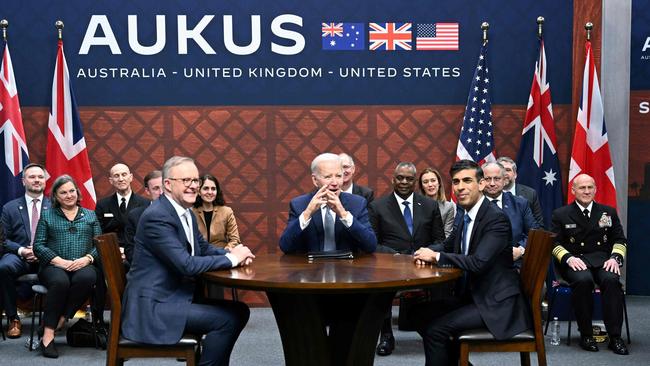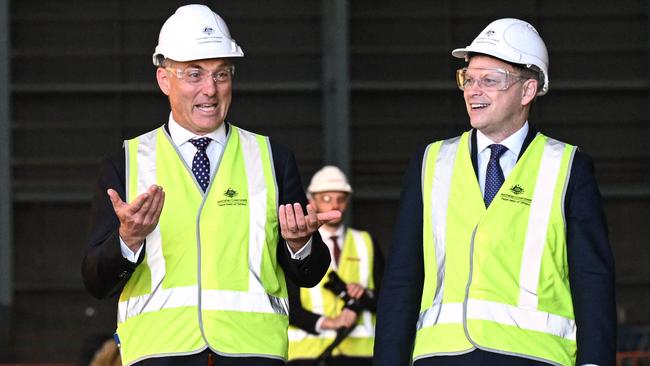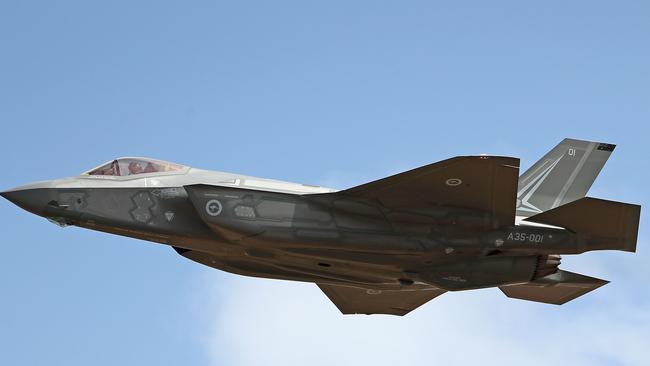
Defence decisions by Australia and the US would be much better informed if both countries sent their navy and air people to Gallipoli, so they could see for themselves how a disaster takes place if military analysis does not start with what opponents are doing and likely to do both now and in the future.
Today’s strategists have access to far more information than those at Anzac Cove so they shouldn’t make the same mistakes.
But they do.
After 100 years, top navy and air force people still do not appear to be taking advantage of that better information so their strategies have an eerie similarity to those of 1915.
Let’s start with nuclear submarines.
The US is developing a new submarine that it believes will be much better than the current generation of nuclear submarines.
But the development of any new submarine must start with an analysis of the antisubmarine weapons that are being developed and the big changes required in nuclear submarine design and technology to respond.
Back in 1915 it was hard to get such information.
But today the US itself is a leader in antisubmarine weaponry, albeit behind China.
The public information about the new US submarine to launch in 2040 indicates that they may not have consulted with their antisubmarine warfare people and don’t appear to have taken into account the looming new era of nuclear submarines via the publicly-known strategies of the Chinese.

Australia’s nuclear submarine policy looks to be a duplication of the purchase strategies behind the Joint Strike Fighter F35 aircraft, where again we didn’t study the future aircraft plans of a range of countries – all of which were looking to have modern aircraft flying at much higher levels than would be possible with the JSF F35.
When refuelling regularly at low kevels, it would become a sitting duck.
All this was pointed out to defence officials at the time by top defence analysts at Air Power Australia via Senate hearings.
We ended up with a very dangerous aircraft for pilots and we are trapped with our 72 JSF-F35 aircraft.
Thankfully, we have just deferred further orders.
Australia must not make the same mistakes with nuclear submarines given the enormous outlays.
But again I fear we have not studied the likely future developments and are anxiously trying to buy submarines that will be very vulnerable to the weapons and technologies being developed.
The great advantage of the American Virginia class submarines is that they can move around the world totally undetected because they travel so deep and do not need to refuel.
But the US navy’s own airborne antisubmarine warfare systems can now detect the slight wave wake that comes from the current large Virginia submarines, and are able to pinpoint the position.
China looks to be further advanced. By the time we take delivery of such submarines, they will be vulnerable to weapons based on detecting the position of current nuclear submarines.
And there is a parallel submarine detection system being developed – locating submarines by sound.
Conventional nuclear submarines require high pressure cooling water – and those high-pressure systems give off a sound that in the future may be detected by modern weaponry.
The Chinese back in 2015 were publicly studying the movement of whales to learn more about the dynamics of large bodies moving through the sea at very deep levels.
They also made it public that they believed that conventional nuclear was not the best propulsion system for next-generation submarines because of the water pressure noise.
Over time, water cooling would be replaced by molten salt-cooled thorium submarines that are much quieter.
It took a long time for China to develop this technology, but the first thorium-driven, quiet submarines cooled by molten salt are now in operation, and more are coming.
The Chinese are so excited by the success of this technology in submarines that they are introducing it into container ships and power stations.
Currently there is no public indication that the new US submarines will embrace thorium, although it is possible other nuclear technologies are being developed.
The published reports indicate that the new submarine maybe larger than current submarines and will need extra nuclear power.
Australia must make sure that any submarine we purchase has the ability to operate successfully in this new weapon and technology environment.
In the Middle East we have been given a display of future warfare with drones and missiles as key weapons.
Indeed, Ukraine has found that Australia’s cardboard drones produced by SYPAQ are very effective.
The Houthis in Yemen are still attacking ships despite American strikes.
The drones and missiles are much cheaper than conventional weaponry.
We should have been looking forward at future weaponry and directing our spending in this direction.

Instead, we decided to spend vast sums on overpriced frigates, which now look to be the weapons of the past and not the weapons of the future.
Simply assuming that today’s weapons will still be useful in 10 or 20 years is a head-in-the-sand strategy.
I think we can forgive the generals of 1915 not fully appreciating the strength of their opponents.
Today, much information is out in the open so there are no excuses for not understanding what your opponent is likely to be doing in 10 to 20 years and planning future weapons for that future world.





More than a century ago, the strategists behind the landing at Gallipoli made a fundamental mistake. They did not determine the strength of their opponents and how the Turks would conduct the battle.